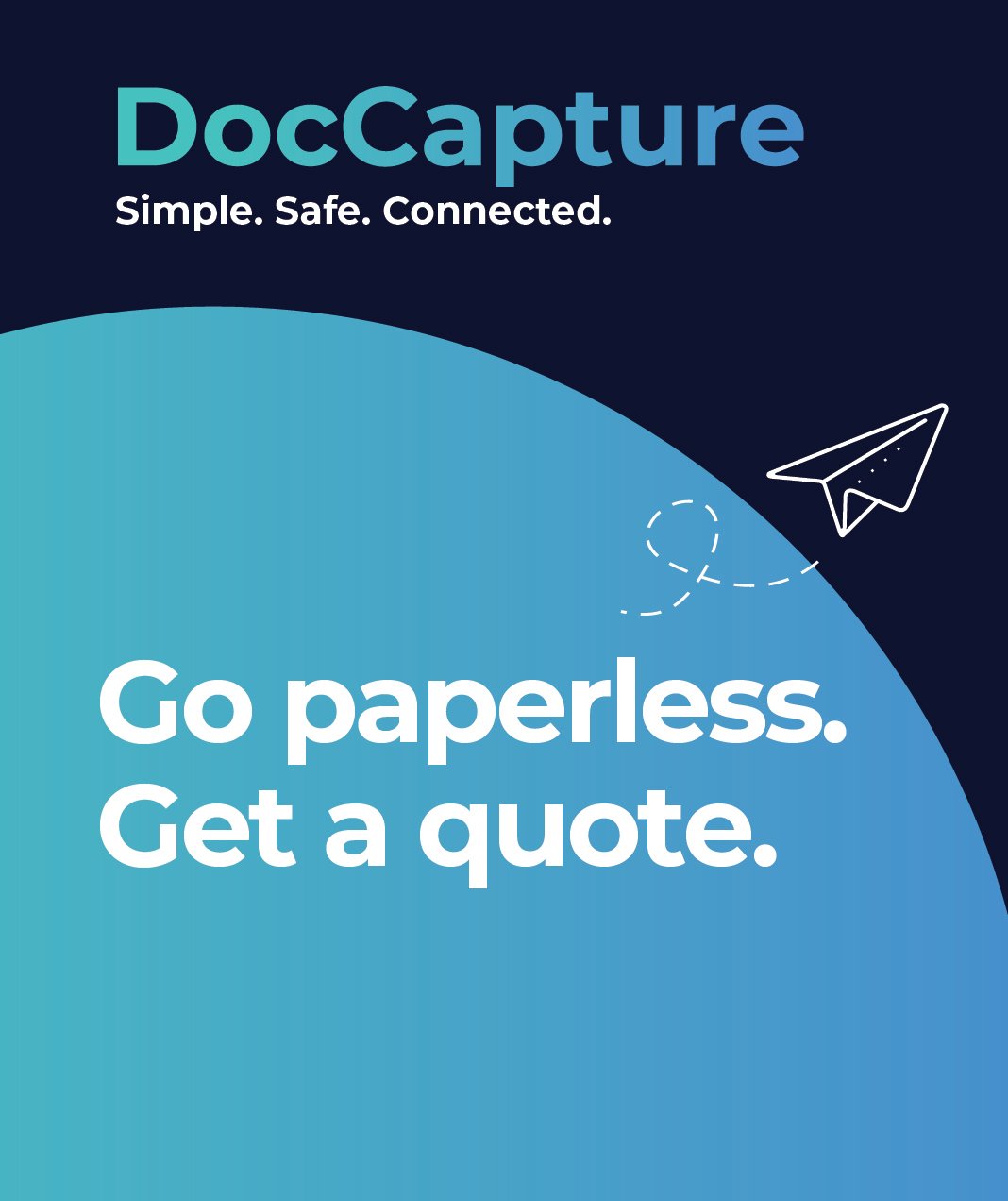Enhancing Donor Reporting and Transparency with Digital Records
Table of contents
In the nonprofit world, donor reporting is more than just a formality — it’s a vital tool for building trust, securing ongoing funding, and showcasing the real-world impact of your mission. Whether you’re summarizing program outcomes for a major grantor or sending annual updates to individual donors, the ability to provide accurate, transparent, and timely information can make all the difference in sustaining long-term support.
But for many organizations, these reports come at a cost: hours spent digging through paper files, chasing down missing documents, and reconciling inconsistent records. When donor and grant histories live in filing cabinets, storage rooms, or scattered across staff inboxes, the process is not only inefficient — it can also compromise the quality and accuracy of your reporting.
That’s why more nonprofits are turning to digital transformation strategies, including document scanning and secure cloud storage, to modernize their reporting processes. By moving from paper-based archives to searchable, centralized digital records, organizations can save time, reduce errors, and strengthen donor confidence through improved transparency.
The Current Pain Points in Donor Reporting
For nonprofits relying on paper archives or partially digitized systems, donor reporting can feel like assembling a puzzle without all the pieces. The process isn’t just tedious — it can also create real risks for your organization’s credibility and compliance.
Time-Consuming Searches for Historical Documents
When donor records, grant agreements, and program reports are stored in multiple filing cabinets or offsite boxes, finding the information you need can take hours. Staff may have to sift through years of files just to verify a single detail for a report. This inefficiency not only drains productivity but also delays communications with donors who expect timely updates.
Risk of Incomplete or Inaccurate Impact Reports
Paper-based systems increase the likelihood of missing or inconsistent data. If one grant report is stored in a different location than its supporting documentation, or if a file is misfiled entirely, the result can be an incomplete picture of your impact. This can undermine donor transparency and erode the trust you’ve worked hard to build.
Compliance and Audit Challenges
When a funder or auditor requests documentation, scrambling to locate records can be stressful and time-consuming. Missing files can raise red flags, even if the underlying work was completed successfully. Without a streamlined system, nonprofit audit readiness becomes an ongoing challenge.
Nonprofits facing these pain points are increasingly exploring solutions like Document Scanning for Nonprofits, which help centralize records and make them instantly accessible while reducing the risks associated with manual recordkeeping.
How Digital Records Improve Donor Reporting
Shifting from paper files to a centralized digital system transforms the way nonprofits handle reporting. By enhancing donor reporting with digital records, organizations can achieve greater efficiency, accuracy, and trustworthiness in their communications.
Faster Access to Historical Data
Digitized archives allow staff to locate historical donor data in seconds. With searchable metadata and keyword tagging, the days of digging through filing cabinets are over. Whether it’s a five-year-old grant agreement or a donor’s giving history, everything is accessible in one secure platform. This not only streamlines reporting but also empowers teams to respond to donor inquiries with speed and confidence.
Improved Accuracy
Digital document management for nonprofits reduces the risks of human error, such as misfiling or incomplete data entry. Centralized storage means there’s one “source of truth” for donor and grant information, ensuring reports are based on the most accurate and up-to-date records available. This directly supports donor transparency by providing a clear, verifiable record of your organization’s activities and outcomes.
Audit Readiness
Maintaining nonprofit audit readiness becomes significantly easier when all records are digital. If a funding agency requests specific documents, they can be retrieved instantly, complete with metadata and timestamps that verify authenticity. This readiness not only helps with compliance but also positions the organization as professional and trustworthy in the eyes of funders.
By strategically implementing solutions like Document Scanning for Nonprofits, organizations create a foundation for accurate, timely, and credible donor reports that inspire long-term support.
Real-World Nonprofit Benefits
The advantages of enhancing donor reporting with digital records aren’t just theoretical — nonprofits across sectors are seeing measurable results after making the shift.
Saving Time and Reducing Workload
A mid-sized environmental nonprofit in the Midwest digitized more than 15 years of grant files and donor correspondence. Before, preparing their annual report required two full weeks of staff time spent retrieving documents from storage. After implementing a secure cloud-based archive, the same report was completed in just two days. The time saved was redirected toward program development and donor engagement — work that directly advanced the mission.
Strengthening Donor Relationships Through Transparency
A health-focused nonprofit used digitized archives to quickly produce a detailed funding impact report for a major donor, including photos, invoices, and outcome data spanning several years. The speed and completeness of the report impressed the donor so much that they increased their annual contribution by 20%, citing the organization’s professionalism and transparency as key factors.
Boosting Compliance Confidence
One education nonprofit regularly faced high-pressure audits from government grant agencies. After scanning and indexing all records, their audit preparation time dropped from months to a matter of days. With instant access to historical donor data and grant records, the team was able to provide everything the auditors requested on the spot — a dramatic improvement in nonprofit audit readiness.
Whether it’s saving weeks of staff time, retaining loyal donors, or breezing through compliance checks, these scenarios show how Document Scanning for Nonprofits can turn reporting from a stressful chore into a strategic advantage.
Overcoming Common Objections
Even with clear benefits, some nonprofit leaders hesitate to move forward with digitization. Common concerns often center around budget, staff adoption, and data security. Fortunately, these barriers can be addressed with practical solutions.
Budget Concerns
Many organizations worry that digitizing archives will be too expensive. In reality, the ROI can be significant. For example, by reducing storage costs, eliminating offsite file retrieval fees, and cutting down on staff hours spent searching for documents, the investment often pays for itself within a year or two. Over time, those savings can be redirected toward programs and services that advance your mission — a compelling case for digital document management for nonprofits.
Ease of Transition
Another concern is the perceived complexity of the process, especially for teams with limited technical experience. Partnering with a provider like Document Scanning for Nonprofits ensures professional guidance from start to finish. Many services handle the entire process — from pickup and secure transport of files to scanning, indexing, and integration with your existing reporting tools — making the transition seamless for staff.
Data Security
Protecting sensitive donor information is a valid concern, but modern digitization solutions employ advanced security protocols, including encryption, secure user authentication, and regular backups. This often makes digital storage more secure than physical files, which can be lost, damaged, or accessed without authorization.
By addressing these common objections upfront, nonprofits can confidently move toward enhancing donor reporting with digital records without fear of disruption, overspending, or data risk.
Steps to Get Started with Digital Records
For organizations ready to begin enhancing donor reporting with digital records, the key is to approach the transition strategically. A structured plan ensures smooth adoption, minimal disruption, and long-term success.
Assess Current Records and Reporting Needs
Start by taking stock of your existing donor, grant, and program documentation. Identify where records are stored, what formats they’re in, and how frequently they’re accessed. This audit will help you prioritize which archives to digitize first and determine the features you need in a digital document management for nonprofits solution.
Partner with a Trusted Scanning Service
Working with an experienced provider like Document Scanning for Nonprofits can save time, reduce errors, and ensure secure handling of sensitive information. Look for a partner who offers indexing, metadata tagging, and integration with your current donor management or CRM systems.
Train Staff and Integrate into Reporting Workflows
Digitization is most effective when it’s seamlessly woven into day-to-day operations. Provide training so staff know how to search for and upload files, use metadata tags, and follow security protocols. Once digital access becomes the norm, preparing donor reports, grant applications, and audit responses will be faster, more accurate, and stress-free.
By following these steps, nonprofits can confidently make the leap to a streamlined, secure, and transparent system that supports donor transparency and nonprofit audit readiness.
Conclusion
For nonprofits, accurate and timely donor reporting is more than an administrative task — it’s a vital part of building trust, demonstrating impact, and sustaining funding. By enhancing donor reporting with digital records, organizations can eliminate time-consuming searches, reduce errors, and be ready for any compliance or audit request.
Digitization empowers nonprofit teams to work more efficiently, communicate more transparently, and strengthen donor relationships through consistent, credible reporting. The transition doesn’t have to be complicated or disruptive — with the right partner and plan, it can be one of the most impactful operational improvements your organization makes this year.
If you’re ready to move beyond the limitations of paper files and unlock the full potential of your donor reporting, fill out our “Get a Quote” form today to start building a more efficient, transparent, and donor-ready future.
Share this
You May Also Like
These Related Stories

Enhancing Donor Reporting and Transparency with Digital Records

Reducing Administrative Overhead in Nonprofits with Scanning Services

